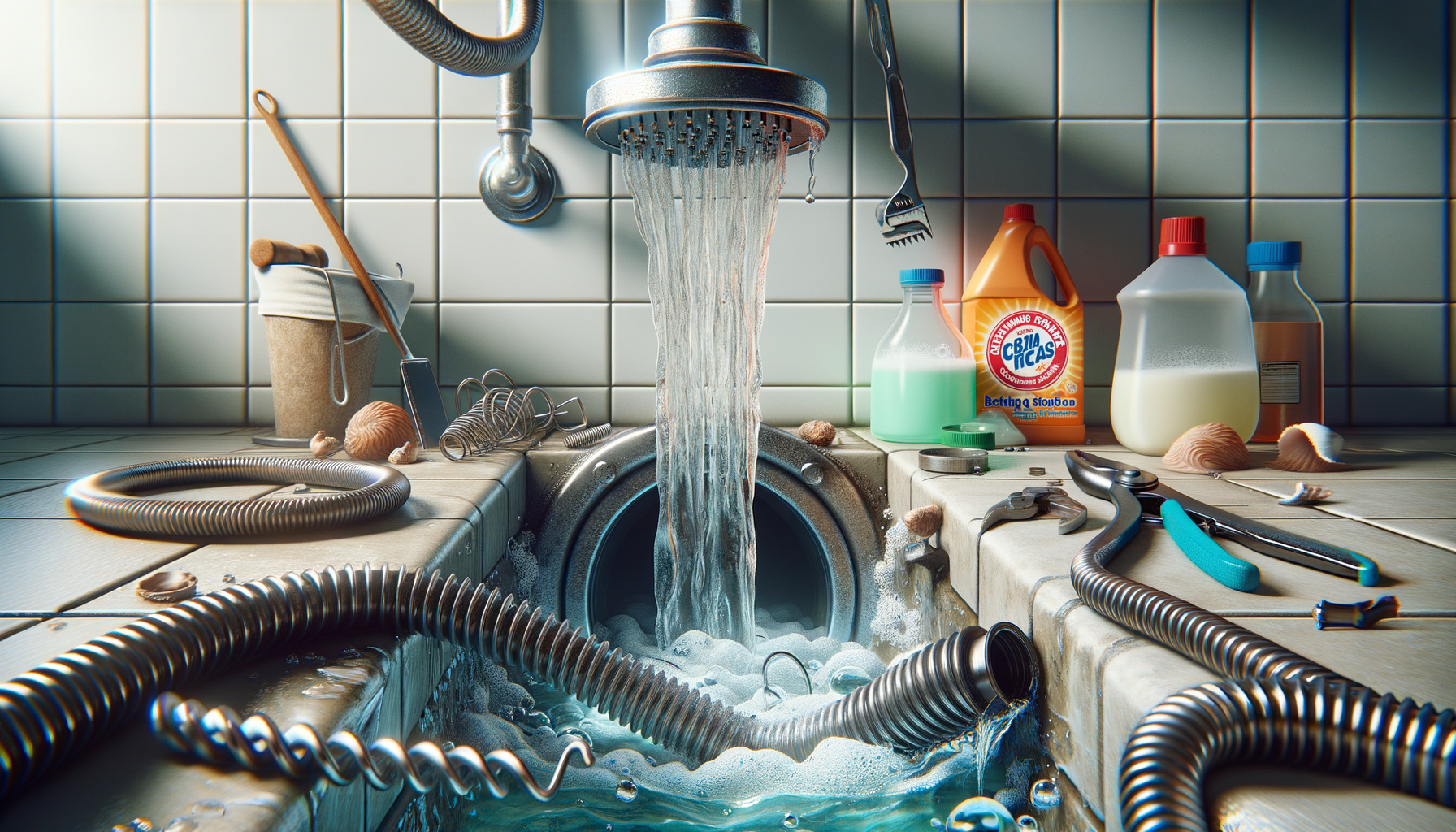Effective Solutions for Unclogging a Shower Drain: Expert Tips and Safe Methods
Introduction to Shower Drain Clogs Dealing with a clogged shower drain is a common household issue that can disrupt your daily routine. Whether it’s caused by hair, soap scum, or other debris, a blockage can lead to slow drainage or even standing water, creating an unpleasant and potentially unsanitary situation. Understanding the causes and solutions

Introduction to Shower Drain Clogs
Dealing with a clogged shower drain is a common household issue that can disrupt your daily routine. Whether it’s caused by hair, soap scum, or other debris, a blockage can lead to slow drainage or even standing water, creating an unpleasant and potentially unsanitary situation. Understanding the causes and solutions for unclogging a shower drain is essential for maintaining a functional and hygienic bathroom environment.
Shower drains can become clogged for several reasons, including the accumulation of hair, soap residue, and mineral deposits. Over time, these materials can create a stubborn blockage that requires immediate attention. Ignoring the problem can lead to more serious plumbing issues, so it’s important to address clogs as soon as they occur.
Identifying the Cause of the Clog
Before attempting to unclog a shower drain, it’s crucial to identify the source of the blockage. This will help you choose the most effective method for clearing the drain. Common culprits include:
- Hair: Hair is the most frequent cause of shower drain clogs. It can easily get caught in the drain, especially when combined with soap scum.
- Soap Scum: Soap residue can build up over time, creating a sticky substance that traps other debris.
- Hard Water Deposits: In areas with hard water, mineral deposits can accumulate and contribute to clogs.
To determine the cause, inspect the visible part of the drain for any obvious obstructions. If the blockage is not immediately apparent, it may be deeper within the plumbing system, requiring more advanced methods to resolve.
Simple DIY Methods to Unclog a Shower Drain
Once you’ve identified the likely cause of the clog, you can try several do-it-yourself methods to clear it. These techniques are straightforward and require minimal tools, making them accessible for most homeowners:
- Boiling Water: Pouring boiling water down the drain can help dissolve soap scum and loosen hair clogs. Be cautious if you have PVC pipes, as the heat may cause damage.
- Baking Soda and Vinegar: A natural cleaning solution, this method involves pouring baking soda followed by vinegar into the drain, allowing it to fizz and break down the blockage.
- Plunger: A plunger can create suction to dislodge the clog. Ensure there’s enough water in the shower to cover the plunger’s cup for effective suction.
These methods are beneficial for minor clogs, but if the blockage persists, you may need to explore more advanced techniques or consider professional assistance.
Advanced Techniques for Stubborn Clogs
For more stubborn clogs that resist basic DIY methods, you may need to employ advanced techniques. These methods require additional tools and a bit more effort, but they can effectively clear more severe blockages:
- Drain Snake: A drain snake, or auger, is a flexible tool that can reach deeper into the plumbing to break up clogs. Insert the snake into the drain, turning the handle to push through the blockage.
- Plumber’s Tool: Professional-grade tools, such as a plumber’s auger, can be rented for tackling particularly tough clogs. These tools are designed to navigate complex plumbing systems.
- Pressure Washer: For extensive clogs, a pressure washer attachment can be used to blast away debris. This method requires caution to avoid damaging pipes.
These techniques are effective for more significant clogs, but if you’re uncomfortable using these tools, it may be wise to consult a professional plumber.
Preventive Measures to Avoid Future Clogs
Preventing clogs before they occur is the most effective strategy for maintaining a clear shower drain. By implementing a few simple practices, you can minimize the risk of blockages:
- Drain Covers: Use a drain cover to catch hair and debris before they enter the plumbing system.
- Regular Cleaning: Clean the shower regularly to prevent soap scum and mineral buildup.
- Hot Water Flush: Periodically flush the drain with hot water to dissolve potential buildup.
By taking these preventive measures, you can reduce the frequency of clogs and maintain a smoothly functioning shower drain, ensuring a more pleasant and hassle-free bathroom experience.
Conclusion: Keeping Your Shower Drain Clear
Unclogging a shower drain doesn’t have to be a daunting task. By understanding the causes of clogs and employing both simple and advanced methods, you can effectively tackle blockages and maintain a clean and functional bathroom environment. Remember, prevention is key. By implementing regular maintenance and using preventive tools, you can keep your shower drain clear and avoid future issues.
Whether you choose to handle the problem yourself or seek professional help, addressing clogs promptly will save you time and frustration in the long run. Keep these tips in mind to ensure a smooth and enjoyable shower experience every day.